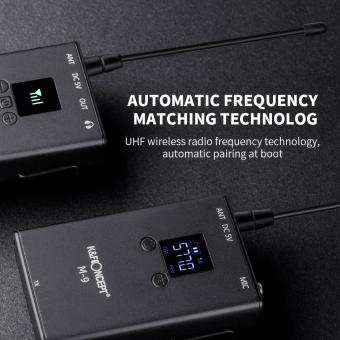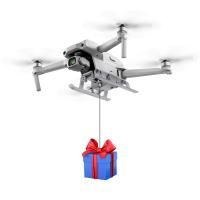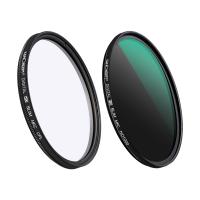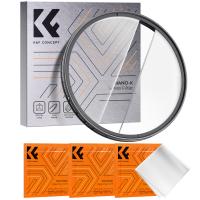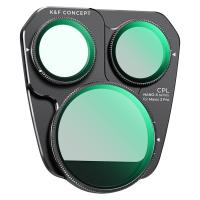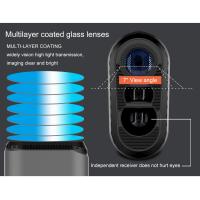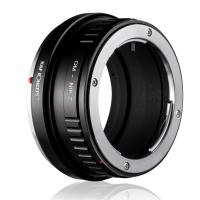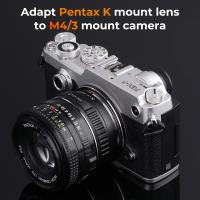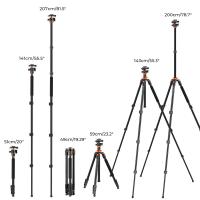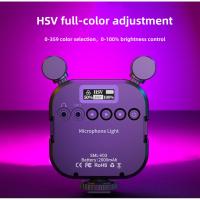How To Use Digital Camera As Cctv ?
To use a digital camera as a CCTV (Closed Circuit Television) system, you would need to follow these steps:
1. Choose a suitable digital camera: Select a camera that has the necessary features for CCTV use, such as high resolution, night vision capabilities, and the ability to connect to a power source.
2. Position the camera: Determine the area you want to monitor and mount the camera in a suitable location. Ensure that it has a clear view of the desired area.
3. Connect the camera to a power source: Plug the camera into a power outlet or use a power adapter to ensure continuous operation.
4. Set up the camera's recording capabilities: Some digital cameras have built-in recording features, while others may require additional software or hardware. Configure the camera to record video footage as needed.
5. Connect the camera to a monitor or computer: Use the camera's video output or connect it to a computer via USB or HDMI to view the live feed or recorded footage.
6. Configure the camera settings: Adjust the camera's settings, such as motion detection, recording duration, or scheduling, to suit your surveillance needs.
7. Monitor and manage the camera: Use the camera's software or app to monitor the live feed, access recorded footage, and manage any additional features or settings.
Remember to check the camera's user manual or manufacturer's website for specific instructions on using your particular model as a CCTV system.
1、 Camera Setup: Positioning and configuring the digital camera for CCTV use.
To use a digital camera as a CCTV system, you need to follow a few steps to ensure proper positioning and configuration. Here is a guide on how to set up your digital camera for CCTV use:
1. Camera Selection: Choose a digital camera that is suitable for CCTV use. Look for features such as high resolution, night vision capabilities, and motion detection.
2. Positioning: Determine the areas you want to monitor and position the camera accordingly. Place it at a height and angle that provides a clear view of the desired area. Consider factors like lighting conditions and potential obstructions.
3. Power Supply: Ensure that the camera is connected to a stable power source. You can use a power adapter or connect it to a power outlet using a power over Ethernet (PoE) adapter.
4. Network Connection: Connect the camera to your network using an Ethernet cable or Wi-Fi. This will allow you to access the camera remotely and view the footage on your computer or smartphone.
5. Configuration: Install the camera's software or app on your device and follow the instructions to configure the camera. Set up features like motion detection, recording schedules, and notifications as per your requirements.
6. Storage: Decide on a storage solution for the camera footage. You can use a local storage device like a hard drive or opt for cloud storage services.
7. Monitoring: Once the camera is set up, you can monitor the footage remotely using the camera's software or app. You can also set up alerts to notify you of any suspicious activity.
It is important to note that using a digital camera as a CCTV system may have limitations compared to dedicated CCTV cameras. However, with advancements in technology, some digital cameras offer advanced features that make them suitable for basic surveillance purposes. Always ensure that you comply with local laws and regulations regarding CCTV usage.
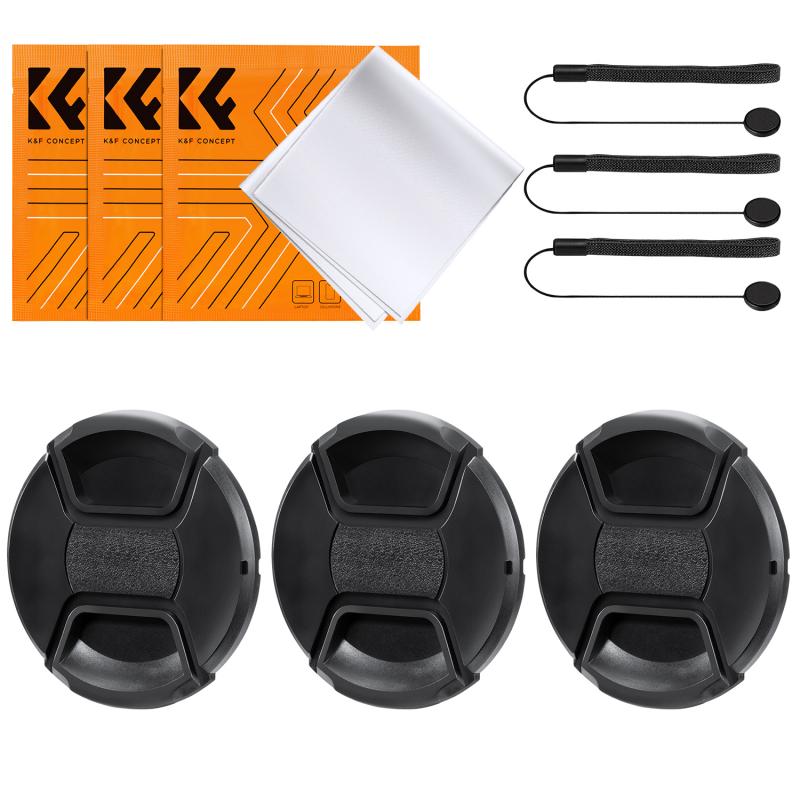
2、 Power and Connectivity: Ensuring proper power supply and connection setup.
To use a digital camera as a CCTV system, you need to ensure proper power supply and connection setup. Here are the steps to follow:
1. Power Supply: Digital cameras require a stable power supply to function effectively. You can either use the camera's built-in battery or connect it to a power outlet using an AC adapter. Ensure that the power source is reliable and provides uninterrupted power to the camera.
2. Connectivity: Connect the camera to a computer or a network video recorder (NVR) using an Ethernet cable or Wi-Fi. If using an Ethernet cable, plug one end into the camera's Ethernet port and the other end into the computer or NVR. If using Wi-Fi, follow the camera's instructions to connect it to your wireless network.
3. Camera Configuration: Install the camera's software or app on your computer or mobile device. Use the software to configure the camera's settings, such as resolution, frame rate, and motion detection. Set up the camera to record continuously or only when motion is detected.
4. Monitoring: Once the camera is set up, you can monitor the live feed from your computer or mobile device. Most cameras come with dedicated software or apps that allow you to view the footage remotely. You can also set up alerts to receive notifications when motion is detected.
5. Storage: Decide on the storage method for the recorded footage. You can either store it locally on the camera's SD card or connect the camera to a network storage device or cloud service. Ensure that you have enough storage capacity to store the footage for the desired duration.
From a latest point of view, advancements in technology have made it easier to use digital cameras as CCTV systems. Many cameras now offer advanced features such as high-resolution video, night vision, and remote access. Additionally, cloud storage options have become more popular, allowing for easy access to recorded footage from anywhere with an internet connection.
Overall, using a digital camera as a CCTV system requires proper power supply and connection setup. By following the steps mentioned above and considering the latest advancements in technology, you can effectively utilize a digital camera for surveillance purposes.
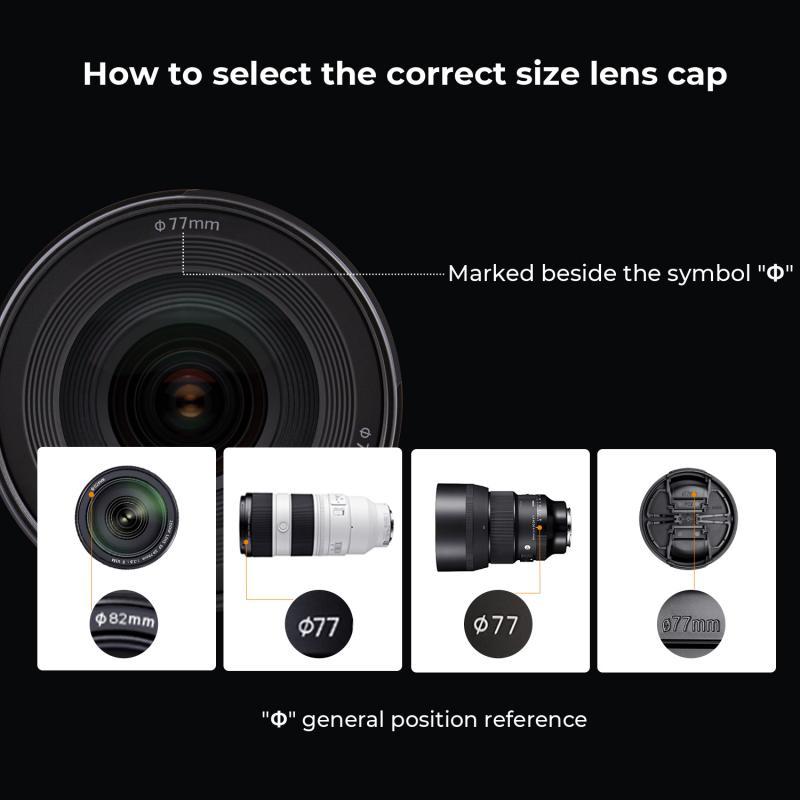
3、 Monitoring Software: Installing and configuring software for camera monitoring.
To use a digital camera as a CCTV, you will need to follow a few steps to ensure proper setup and functionality. Here is a guide on how to use a digital camera as a CCTV:
1. Camera Selection: Choose a digital camera that meets your surveillance needs. Look for features such as high resolution, night vision, and motion detection capabilities. Ensure that the camera has the necessary ports for connectivity.
2. Mounting and Positioning: Install the camera in a strategic location that provides a wide view of the area you want to monitor. Ensure that the camera is securely mounted and positioned at the desired angle.
3. Connectivity: Connect the camera to your computer or a dedicated monitoring device using the appropriate cables. Most digital cameras use USB or HDMI connections. Ensure that the camera is recognized by the device.
4. Monitoring Software: Install and configure software specifically designed for camera monitoring. There are various options available, both free and paid, that offer features like live streaming, recording, and remote access. Choose a software that suits your requirements and follow the installation instructions.
5. Configuration: Once the software is installed, configure the camera settings within the software interface. This includes adjusting resolution, frame rate, motion detection sensitivity, and other relevant parameters.
6. Monitoring: Launch the monitoring software and access the camera feed. You should be able to view the live stream from the camera on your computer or monitoring device. Set up alerts or notifications for any detected motion or suspicious activity.
7. Remote Access: If you want to monitor the camera feed remotely, configure the software to allow remote access. This will enable you to view the camera feed from anywhere using a smartphone, tablet, or another computer.
It is important to note that using a digital camera as a CCTV may have limitations compared to dedicated CCTV systems. However, with the advancements in technology, digital cameras can provide a cost-effective solution for basic surveillance needs.
In conclusion, using a digital camera as a CCTV involves selecting the right camera, mounting it properly, connecting it to a computer or monitoring device, installing monitoring software, configuring the settings, and accessing the camera feed for monitoring purposes.
4、 Remote Access: Enabling remote access to view camera feed.
To use a digital camera as a CCTV system, you can follow these steps:
1. Camera Selection: Choose a digital camera that meets your requirements for surveillance. Look for features such as high resolution, night vision, motion detection, and remote access capabilities.
2. Camera Placement: Determine the areas you want to monitor and position the camera accordingly. Ensure that the camera has a clear view of the desired area and is securely mounted.
3. Power Supply: Connect the camera to a power source. Most digital cameras come with an AC adapter or can be powered using batteries or solar panels.
4. Storage: Set up a storage solution for the camera feed. This can be an SD card inserted into the camera or a connected device such as a computer or Network Video Recorder (NVR).
5. Remote Access: Enabling remote access to view the camera feed is crucial for monitoring from anywhere. This can be done by connecting the camera to a network and configuring port forwarding on your router. Alternatively, you can use cloud-based services or camera-specific apps that allow remote viewing.
6. Monitoring: Install the necessary software or app on your computer or mobile device to access the camera feed remotely. Ensure that you have a stable internet connection for uninterrupted monitoring.
7. Additional Features: Depending on the camera model, you may have access to additional features such as two-way audio, pan-tilt-zoom (PTZ) control, or integration with other security systems.
It's important to note that using a digital camera as a CCTV system may have limitations compared to dedicated CCTV cameras. However, with advancements in technology, some digital cameras offer excellent surveillance capabilities. Always check the camera's specifications and consult the manufacturer's guidelines for optimal usage.
In the latest point of view, advancements in digital camera technology have made it easier than ever to use them as CCTV systems. Many cameras now offer built-in Wi-Fi and cloud storage options, eliminating the need for complex network setups. Additionally, some cameras come with advanced AI features like facial recognition and object detection, enhancing the security capabilities. It's also worth considering cameras with mobile app integration, allowing you to receive real-time alerts and access the camera feed on your smartphone or tablet. As technology continues to evolve, digital cameras are becoming a more viable and cost-effective option for home and small business surveillance.













